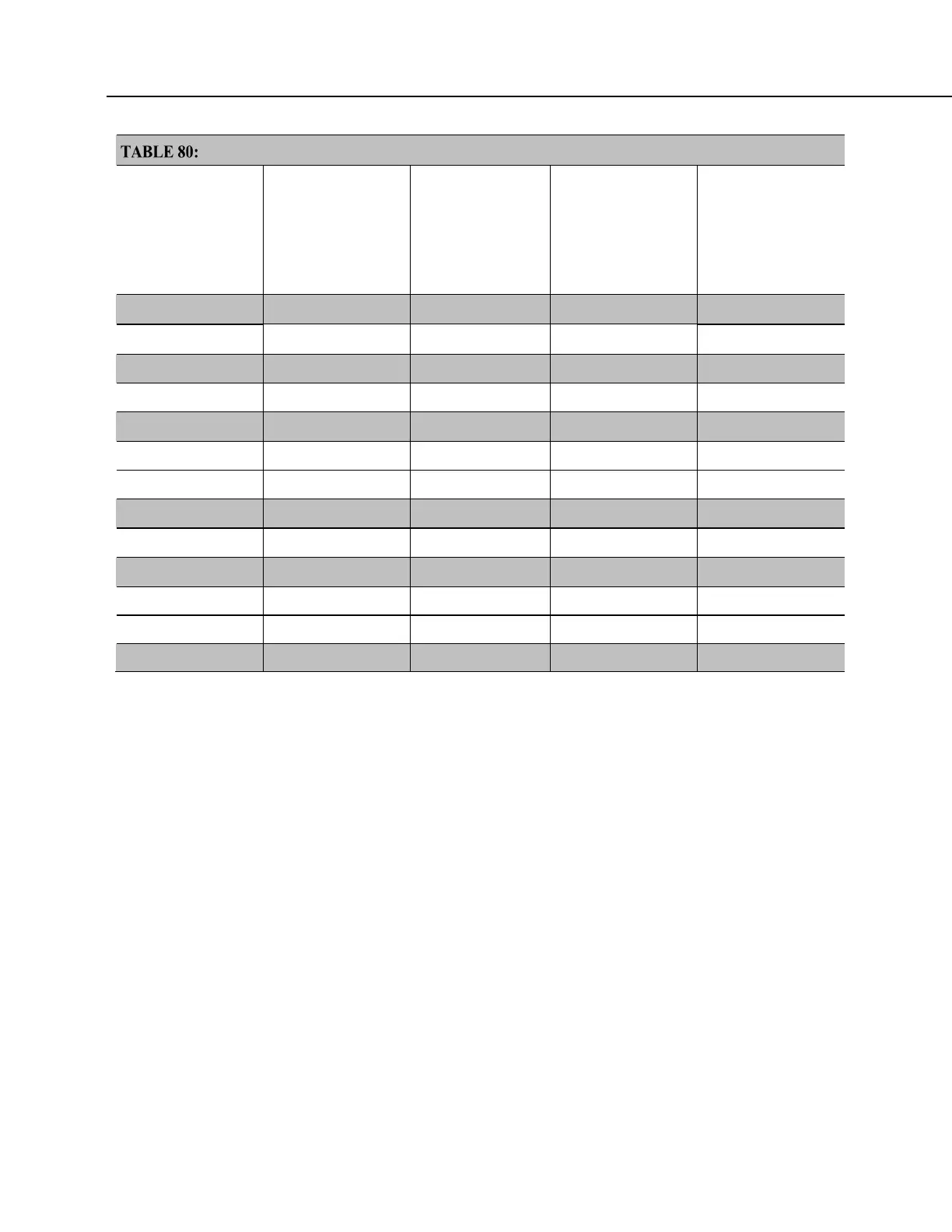Section 8. Operation
Offset Voltage Compensation Options
CRBasic
Measurement
Instruction
Input Reversal
(RevDiff =True)
Excitation
Reversal
(RevEx = True)
Measure
Offset During
Measurement
(MeasOff = True)
Measure Offset
During
Background
Calibration
(RevDiff = False)
(RevEx = False)
(MeasOff = False)
AM25T()
BrHalf()
BrHalf3W()
BrHalf4W()
BrFull()
BrFull6W()
TCDiff()
TCSe()
Therm107()
Therm108()
Therm109()
VoltDiff()
VoltSe()
Input and Excitation Reversal
Reversing inputs (differential measurements) or reversing polarity of excitation
voltage (bridge measurements) cancels stray voltage offsets. For example, if 3
µV offset exists in the measurement circuitry, a 5 mV signal is measured as 5.003
mV. When the input or excitation is reversed, the second sub-measurement is –
4.997 mV. Subtracting the second sub-measurement from the first and then
dividing by 2 cancels the offset:
5.003 mV – (–4.997 mV) = 10.000 mV
10.000 mV / 2 = 5.000 mV
When the CR800 reverses differential inputs or excitation polarity, it delays the
same settling time after the reversal as it does before the first sub-measurement.
So, there are two delays per measurement when either RevDiff or RevEx is used.
If both RevDiff and RevEx are True, four sub-measurements are performed;
positive and negative excitations with the inputs one way and positive and
negative excitations with the inputs reversed. The automatic procedure then is as
follows,
1. Switches to the measurement terminals
2. Sets the excitation, and then settle, and then measure

